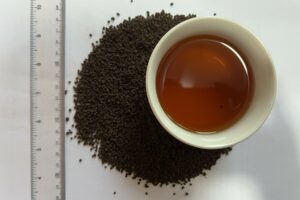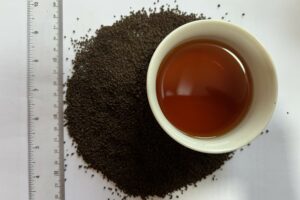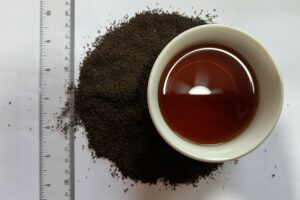Tea’s origin story is infused with a blend of myth and fact and colored by ancient concepts of spirituality and philosophy. Here’s our rundown of the history of tea:
LEGENDS FROM CHINA AND INDIA
According to Chinese legend, the history of tea began in 2737 B.C.E. when the Emperor Shen Nong, a skilled ruler and scientist, accidentally discovered tea. While boiling water in the garden, a leaf from an overhanging wild tea tree drifted into his pot. The Emperor enjoyed drinking the infused water so much that he was compelled to research the plant further. Legend has it that the Emperor discovered tea’s medicinal properties during his research.
Indian history of tea attributes its discovery to Prince Bodhi-Dharma, an Indian saint who founded the Zen school of Buddhism. In the year 520, he left India to preach Buddhism in China. To prove some Zen principles, he vowed to meditate for nine years without sleep. It is said that towards the end of his meditation, he fell asleep. Upon awakening, he was so distraught that he cut off his eyelids, and threw them to the ground. Legend has it that a tea plant sprung up on the spot to sanctify his sacrifice.
POPULARIZATION IN THE FAR EAST
Whatever the legend, tracing tea’s original roots proves difficult. It is probable that the tea plant originated in regions around southwest China, Tibet, and Northern India. Chinese traders may have traveled throughout these regions often and encountered people chewing tea leaves for medicinal purposes.
It was not until the Tang dynasty (618-907), often referred to as the classic age of tea, did consumption become widespread. A government-imposed tea tax further evidences the beverage’s growing popularity, and it was at this time that tea was recognized as China’s national drink.
TEA ENTERS JAPAN
Japan’s history of tea begins around the early 9th century, a Japanese Buddhist monk, Saichō, is credited with introducing tea to the country. While studying in China, Saichō discovered tea and brought back seeds to grow at his monastery. Over time, other monks followed suit, and soon small tea plantations sprouted up at secluded monasteries. However, due to the isolation of these plantations, tea’s popularity in Japan did not blossom until the thirteenth century.
The most popular method of preparing tea involved grinding the delicate green tea leaves into a fine powder using a stone mill. This powder, called Matcha in Japan, was a precursor to the traditional Japanese tea ceremony (“Chanoyu”), and it was popularized by the Zen monk Eisai. Matcha is prepared with bamboo whisks (“chasen”) and served in hand-crafted bowls (“chawan”).
…to be continued…









